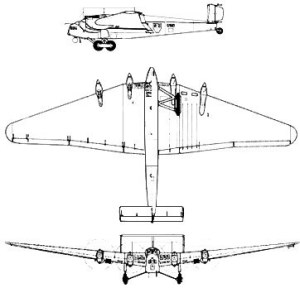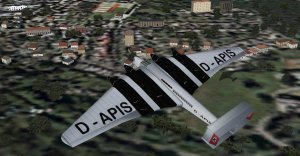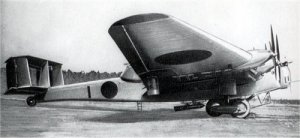Simanaitis Says
On cars, old, new and future; science & technology; vintage airplanes, computer flight simulation of them; Sherlockiana; our English language; travel; and other stuff
JUNKERS G-38
Passengers in today’s jumbo jets travel encapsulated in alloy tubes, but those in the 1930’s Junkers G-38 had more interesting choices: Eleven sat in upper or lower levels, four had a smoker’s cabin aft, a pair sat in its glass-enclosed nose—and three each had leading-edge seats in the giant aircraft’s wing roots!
When it entered service in 1930, the G-38 manufactured by Junkers Flugzeug of Dessau, Germany, was the largest land plane in the world. The Dornier Do-X flying boat was even larger (see http://wp.me/p2ETap-1f6). The G-38’s wingspan of 144 ft. 4 in. puts it between a modern Airbus 320’s 117 ft. 5 in. span and a Boeing 767’s 156 ft. 1 in.
The G-38’s leading-edge passenger accommodations were made possible by the aircraft’s extremely thick wing section (5 ft. 7 in. at the root), a precursor of blended wing/body designs to follow to the present day. Mechanics had access to all four of its engines through passages in the wings. Also noteworthy were its ailerons/wing flaps, isolated from the wings proper, a Junkers design preference, and retractable radiators for engine coolant and oil.

The first G-38, D-2000, overflies the second, D-2500, named the General Feldmarschall von Hindenburg.
Junkers built only two G-38s, initially registered as D-2000 and D-2500. The first began regular Berlin/London service in 1931. Its maximum capacity of 13 passengers was enlarged to accommodate as many as 30 with installation of an upper deck. The second craft had this feature from the onset. Two rows of fuselage windows identifies the twin-deck variants.
The second G-38, D-APIS, flew routes serving Berlin, Hanover, Amsterdam and London for Deutsche Luft Hansa, a forerunner between 1926 and 1945 of the modern Lufthansa Airlines founded in 1953. The first aircraft, reregistered as D-AZUR, had an engine upgrade in 1934, with installation of more powerful Jumo 4 powerplants.

A Jumo 205, a later version of the Jumo 4. Note its opposed-piston configuration. Image fromTennen-Gas.
The Jumo 4 was a 28.5-liter inline-six two-stroke diesel of opposed-piston configuration. An opposed-piston design featured two pistons per cylinder, their respective crankshafts opposite each other geared to a single output shaft.
There’s an interesting, albeit jingoistic, video of the G-38 at http://goo.gl/zl8sXR.
Both G-38s continued with Luft Hansa until 1936. Then D-AZUR was written off in a crash after a post-maintenance test flight. Later, D-APIS got pressed into service with the Luftwaffe as a military transport. It was destroyed on the ground during an RAF raid on Athens in 1941.
Junkers built only its pair of G-38s. The company had submitted a design study for further development to the Reichsluftfahrtministerium, though the Reich air travel ministry rejected the study. However, the Japanese were interested.
Two Ki-20s were built in Japan with Junkers-manufactured parts; four more were completed with Mitsubishi components. Japan envisioned using the Ki-20s for bombing the Philippines and for long-distance missions to Siberia. These aircraft, the largest in the Imperial Japanese Army Air Service, were kept secret until 1940.
The Ki-20 had a crew of 10, including six gun positions. A cannon was mounted dorsally; twin machine guns were in the nose, with single machine guns in two upper wing turrets and in a lower wing turret.
A photograph (see http://wp.me/p2ETap-1iE) suggests that my favorite elements of the G-38, its wing-root cabins, were eliminated. ds
© Dennis Simanaitis, SimanaitisSays.com, 2014






